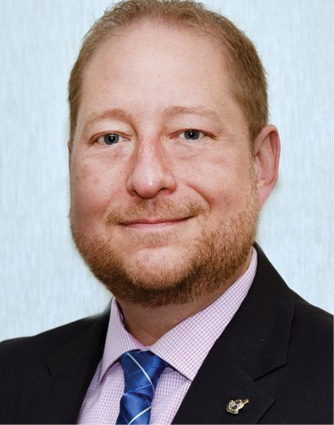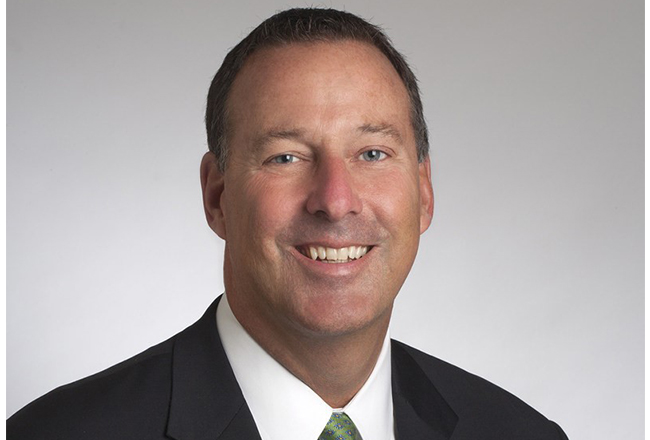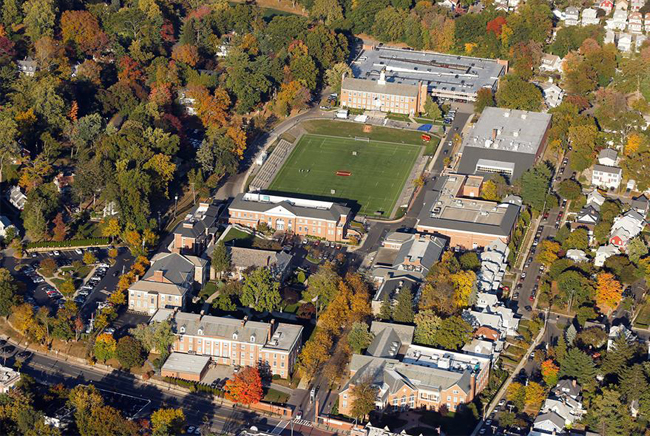
When it comes to repurposing long-vacant office buildings and corporate parks, Thomas Madden has been there and done that.
In fact, he”™s still doing it.
“The challenge is to convince people that it”™s the right thing to do,” Stamford”™s director of economic development said. “Taking a building that”™s not occupied and turning it into something usable adds to the neighborhood and the surrounding area.”
And, of course, it adds to the city”™s tax rolls as well.
But that”™s proving to be a hard sell in Stamford. A proposal to repurpose one of the six buildings at Stamford”™s High Ridge Park office complex into a fitness facility has run into significant opposition from neighboring residents, who have cited concerns about noise and increased traffic in the area.
The three-story building at 3 High Ridge, once the corporate headquarters for Frontier Communications, has been vacant since the telecommunications provider moved to 401 Merritt 7 in Norwalk in 2015. Built in 1970, it is in dire need of cleaning and repairs; several windows are boarded up and cracks are visible in its façade.
Stamford”™s master plan was amended three years ago to allow for “the adaptive reuse of compatible office, research and development, residential, government, educational and medical uses” outside the downtown area ”” a way of addressing the fact that the once popular single-corporate tenant concept has mostly passed. “Adaptive reuse” allows for new buildings to be constructed, provided they maintain the general tenor of the surrounding neighborhood.
Many corporate citizens today “want to move closer to a city”™s central business district and transportation infrastructure,” said Madden, who took the Stamford job in 2014. “The text amendment was a means of getting a jump on something that we were sure would happen.”
As indeed it has. According to the American Planning Association (APA), “Suburban office parks are in trouble, with companies relocating to the mixed-use, ”˜24/7”™ environments preferred by millennials and away from the single-purpose, sterile work places of the second half of the 20th century. As a result, interest in repurposing these properties continues to grow.”
The APA cited the former Bell Labs research complex in Holmdel Township, New Jersey, as a pioneering repurposing project. Vacated in 2008, the 2.1 million-square-foot structure stood neglected for seven years before being redeveloped as a mixed-use facility with housing, a hotel, retail businesses and restaurants.
Repurposing long-vacant properties can have a significant impact on a community”™s real estate market. According to CBRE”™s first quarter 2018 market report, Westchester County”™s rents rose to a 15-year high of $29.43 per square foot, largely due to adaptive repurposing.
As with Bell Labs, 3 High Ridge has lain dormant for several years. “We”™ve shown it to four different companies,” Madden said. “But it”™s a hard sell to get someone to take up almost 100,000 square feet of space.”
The city and developer George Comfort & Sons thought they”™d solved the issue with Life Time, the chain of health clubs headquartered in Chanhassen, Minnesota, which would remove the existing building and replace it with a fitness facility that would have the same footprint. Aaron Koehler, director of real estate development at Life Time, said details would not be finalized until approval is given by Stamford”™s zoning department. The building would end up at under 100,000 square feet, Koehler said.
Concerns about noise will be addressed by the deadening effect of the building itself as well as by “noise-mitigating landscaping,” according to Andrew Joseph, a vice president at Comfort & Sons.
Objections to increased traffic are based both on the fact that Life Time would be a seven-days-a-week proposition ”” as opposed to the Monday-Friday business hours observed by Frontier ”” and that the fitness center would draw some 5,000 members arriving and departing during and after rush hours.
Madden said he takes the same point of view that Comfort and Life Time do: That 5,000 people looking to exercise would not all be coming and going at the same time.
Having been rejected by Stamford”™s planning department on Feb. 26, the Life Time proposal now sits with zoning following a number of public hearings in March and April. A text change to zoning regulations must be approved by a super-majority of at least 4-1 and would apply to the city”™s five other office parks. That decision is expected to come soon.
Madden was instrumental in the similar repurposing of several buildings in his previous roles as a planner at the Westchester County Department of Planning and four years as deputy commissioner and six years as commissioner of the Town of Greenburgh. Working with Westchester County Association President and CEO Bill Mooney, Madden also helped turn several buildings throughout the county into affordable housing units, he said.
Madden is proud of helping usher through zoning changes along the “Platinum Mile” during his time in Westchester. This has allowed office buildings, largely vacant, along the I-287 corridor to be repurposed. Properties like 400 Westchester Ave. in West Harrison languished for a decade, from when Verizon left in 1998 to when Fordham University arrived in 2008. The vacancy rate on the Platinum Mile was 30 percent in 2010. Currently, apartments and a supermarket are being developed in the corridor.
Another example of change came with the arrival of Life Time, which acquired a special-use permit and demolished the old home of The Journal News in 2014 in favor of a 206,000-square-foot facility in West Harrison. The company also expects to open the doors of an under-construction 40,000-square-foot center on the former Reader”™s Digest property in Chappaqua in November.
The vision, Madden said, is to “go back to the 1930s ”˜village”™ concept,” where employees go to work in offices decidedly less than the 100,000-square-foot-plus behemoths that were popular in the 1960s and ”˜70s, while also offering a vibrant nightlife powered by retail, restaurants and the like.
Such amenities, he said, will help attract other businesses looking to address the demands of today”™s workforce.
“The key is to get residents to buy in,” Madden said, both about Westchester and Stamford. “The question is: ”˜What exactly do you want?”™”
Having a “vacant desert” is not the answer for most people, he said. “And the taxes ”” or lack of ”” obviously impacts our bottom line.”
If the Life Time at High Ridge Park does not happen, he said, “We”™ll have to revisit it again. We really don”™t want that property to sit vacant much longer.”






















